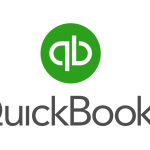Introduction.
Excel is a versatile and widely used spreadsheet software that can be a valuable tool for managing payroll in businesses of all sizes.
While dedicated payroll software is available, Excel provides a cost-effective solution for organizations looking to handle payroll processes internally.
Whether you’re a small business owner, a startup founder, or an HR professional, learning how to use Excel for payroll can help you maintain accurate employee records, calculate earnings and deductions, and ensure timely and compliant payroll processing.
In this guide, we will explore the various ways Excel can be leveraged for payroll management.
From setting up payroll spreadsheets to tracking employee hours and generating payroll reports, Excel offers a range of features that can streamline payroll administration.
How do I Use Excel For Payroll?
Whether you’re a small business owner, a startup founder, or an HR professional, learning how to use Excel for payroll can streamline your operations, help maintain accurate employee records, calculate earnings and deductions, and ensure timely and compliant payroll processing.
In this comprehensive guide, we will explore the various ways Excel can be effectively leveraged for payroll management.
From setting up payroll spreadsheets and tracking employee hours to calculating tax withholdings and generating detailed payroll reports, Excel offers a range of features that can simplify and enhance payroll administration.
Whether you’re new to Excel or looking to expand your existing skills, this guide will equip you with the knowledge and tools necessary to harness the full potential of Excel in managing payroll.
Let’s dive into the benefits and strategies of using Excel for payroll management.
Step 1: Set Up a Payroll Spreadsheet.
Create a new Excel spreadsheet dedicated to payroll. Organize it with columns for employee names, employee IDs, hours worked, pay rates, deductions, taxes, and net pay.
Step 2: Enter Employee Data.
Enter employee information into the spreadsheet, including names, IDs, hourly rates, salaries, and tax-related details. Make sure to keep this data accurate and up-to-date.
Step 3: Calculate Gross Pay.
Use Excel’s formulas to calculate gross pay based on the number of hours worked and pay rates for hourly employees. For salaried employees, their monthly or annual salary can be entered directly.
Step 4: Deductions and Taxes.
Set up formulas to calculate deductions, including retirement contributions, health insurance premiums, and any other employee-specific deductions. Calculate taxes based on the appropriate tax brackets and rates.
Step 5: Net Pay Calculation.
Calculate net pay by subtracting deductions and taxes from gross pay. Ensure that the formulas are accurate, as any errors can result in incorrect payments.
Step 6: Record Keeping.
Maintain detailed records of each payroll run, including dates, employee details, gross pay, deductions, taxes, and net pay. This documentation is crucial for auditing and compliance purposes.
Step 7: Generate Payroll Reports.
Excel enables you to create various payroll reports, such as payroll registers, tax reports, and employee earnings statements. These reports provide valuable insights into your payroll data.
Step 8: Periodic Reconciliation.
Regularly review and reconcile your payroll data to identify and rectify any discrepancies. Ensure that all data is consistent and accurate to avoid payroll errors.
Step 9: Backup and Security.
Protect your payroll spreadsheet with proper security measures, and regularly back up your data to prevent loss.
Step 10: Seek Excel Training.
If you’re new to Excel or want to enhance your skills, consider enrolling in Excel training courses or exploring online tutorials and resources. Excel proficiency can significantly improve your payroll management capabilities.
Conclusion.
Excel offers a versatile and cost-effective solution for managing payroll processes, making it a valuable tool for businesses looking to maintain accuracy and compliance in their payroll operations.
By following the steps outlined in this guide and continuously improving your Excel skills, you can harness the power of this spreadsheet software to streamline your payroll administration, reduce errors, and ensure that your employees are paid accurately and on time.
Excel for payroll management is a powerful and accessible resource that can benefit businesses of all sizes.






GIPHY App Key not set. Please check settings